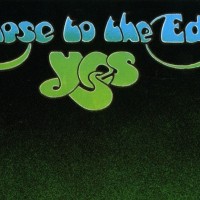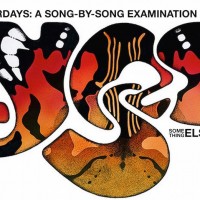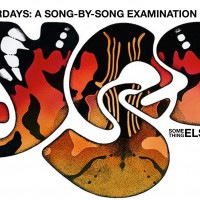Yes was flying high after the success of 1971’s Fragile, their fourth album. With the addition of Rick Wakeman, the world’s greatest progressive rock band developed a gravitas in arranging epic songs like “Heart of the Sunrise” and “Roundabout.” They then entered Advision studios in London in the spring of 1972 with the intent to further their development.
Close to the Edge, the resulting studio project, represents a furthering of the process and the second cycle of Yes albums without a change in personnel. The three songs, recorded quickly by co-producer Eddie Offord, reflect significant contributions from all Yes members. Nowhere is this more apparent than the title track.
“Close to the Edge” song represented a slightly different approach to arranging and recording, as most of the parts where done live by Yes. Substantial overdubs where employed, however, and various pieces of compositions by Jon Anderson and Steve Howe were arranged together with input from Chris Squire, Eddie Offord and Rick Wakeman. The opening track, credited to Anderson and Howe, represents four movements over 18 minutes. The lyrics, written mostly by Jon Anderson, were inspired by the Hindu/Buddhist mysticism based on the book Siddhartha.
The first section, subtitled “The Solid Time of Change,” is mostly instrumental and covers numerous key and time signature changes. Steve Howe’s Gibson 335 provides a foil to Rick Wakeman’s Hammond organ, while Bill Bruford provides a complicated interaction with Chris Squire’s bass. Jon Anderson’s presence is barely felt. Howe provides the main musical theme of the song in this section before an abrupt switch in timing and timbre as Anderson joins in.
The “Total Mass Retain” section of the song switches the mood quickly as Steve Howe leads the band into a brief boil which is capped off by Bruford’s tom-tom fill. Anderson and Squire sing in tandem during the section with uncanny precision. Again, the pace and key changes. Remarkably, Chris Squire plays a sliding and punctuated bass part while he and Anderson sing a vocal together which is in a different time signature than the music. The pace is even more frenzied as Jon Anderson delivers a lead vocal which contrasts with the music, in power and precision. Wakeman debuts several Moog and mellotron sounds into the mix.
“I Get Up, I Get Down” follows in rapid succession. Again, the pace changes as Steve Howe’s electric sitar compliments Wakeman’s Hammond organ and mellotron orchestration. The shift is dramatic and stunning. Wakeman’s stunning presence is almost overshadowed by the harmony vocals provided by Chris Squire and Steve Howe. Anderson’s vocal stays with the main theme, while Squire and Howe brilliantly provide a contrast. If “Close to the Edge” were to end here most would be satisfied, but after Rock Wakeman’s church organ interlude we are treated to the final section, subtitled “Seasons of Man.”
The frenzy starts again, kicked off my Wakeman’s forceful synthesizer and the galloping charge of Bruford’s jazzy back beat. Wakeman then steps over to deliver a Tony Kaye-worthy Hammond organ solo before a recapitulation of the main musical theme. All the prior musical themes are repeated in this section, before the song wraps up and the listener is left exhausted and fully satisfied.
Close to the Edge was clearly a high water mark for Yes at the time. And the original album has two more classic songs which have significantly impacted the Yes cannon of work. No wonder the title song tops many lists of the greatest progressive rock songs ever.
- These Moments Still Stand Out on ‘Toto XIV’ - March 20, 2025
- Fernando Perdomo – ‘Waves 3’ (2025) - March 13, 2025
- Deborah Holland – ‘I Made It This Far’ (2025) - March 7, 2025




